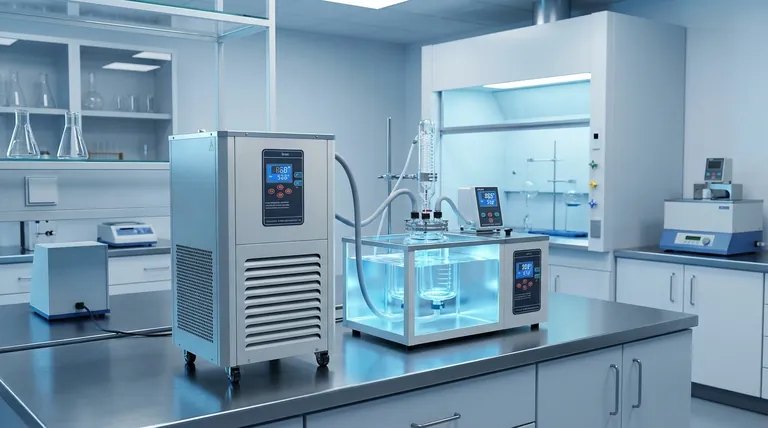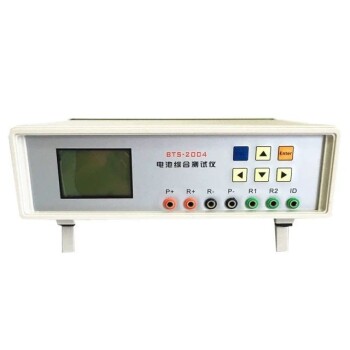To keep a temperature constant, you must create a system that effectively manages heat transfer. The most critical first step is using high-quality insulation to create a thermal barrier, which slows the rate at which heat enters or leaves a space, making it vastly easier for a climate control system to maintain a stable temperature.
The core principle of temperature stability is not about a single component, but about achieving thermal equilibrium. This is a state where the rate of heat being added to a space is perfectly balanced by the rate of heat being removed.

The Fundamental Principle: Balancing Heat Transfer
To control temperature, you must first understand how heat moves. Heat always flows from a warmer area to a cooler one through three primary mechanisms: conduction, convection, and radiation. Your goal is to control this flow.
Understanding Heat Gain
Heat gain is the introduction of thermal energy into your space. Common sources include sunlight pouring through windows (solar gain), heat generated by appliances and people, and warm outside air infiltrating the structure.
Understanding Heat Loss
Conversely, heat loss occurs when thermal energy escapes. This typically happens through walls, ceilings, floors, and windows, as well as through air leaks that allow warm interior air to be replaced by cooler outside air.
The Goal of Equilibrium
A constant temperature is achieved when heat gain equals heat loss. An uninsulated space is highly susceptible to the outside environment, leading to rapid fluctuations. A well-managed space uses specific strategies to control this exchange.
Key Strategies for Thermal Regulation
Achieving thermal equilibrium involves both passive and active strategies. Passive strategies resist temperature change without consuming energy, while active strategies use energy to add or remove heat as needed.
Resisting Heat Flow with Insulation (Passive Control)
Insulation is your primary passive defense. Materials like foam, fiberglass, or cellulose contain tiny pockets of trapped air, which are poor conductors of heat. This drastically slows the transfer of heat through your walls and ceiling.
The effectiveness of insulation is measured by its R-value. A higher R-value indicates a greater resistance to heat flow, providing better performance and making it easier to maintain your target temperature.
Eliminating Air Leaks (Passive Control)
Air leakage, or infiltration, is a major source of temperature instability. Gaps around windows, doors, and utility penetrations allow uncontrolled air exchange, undermining your insulation.
Air sealing these gaps is a critical and cost-effective step. It ensures that your insulated barrier is continuous and that the air you've paid to heat or cool stays inside.
Implementing Active Climate Control (HVAC)
Even with excellent insulation and sealing, some heat transfer is inevitable. This is where an active climate control system—your Heating, Ventilation, and Air Conditioning (HVAC)—comes in.
Your thermostat acts as the brain, sensing the temperature. When it deviates from the setpoint, the HVAC system activates to either add heat (furnace) or remove heat (air conditioner), restoring the thermal equilibrium.
Understanding the Trade-offs
Implementing a complete thermal regulation system involves balancing initial costs with long-term benefits and understanding how different components interact.
The Cost vs. Benefit Analysis
High-performance insulation, windows, and HVAC systems have a significant upfront cost. However, this investment pays for itself over time through dramatically lower energy bills, as the system doesn't have to work as hard to maintain a constant temperature.
The Risk of an Airtight Environment
A very well-sealed and insulated space can trap indoor air pollutants and humidity. A balanced system often requires a dedicated ventilation system, such as a Heat Recovery Ventilator (HRV), to bring in fresh air without significant thermal loss.
System Interdependence
These strategies work as a system, not in isolation. A powerful HVAC unit in a poorly insulated, leaky building will waste enormous amounts of energy. Conversely, world-class insulation without any active cooling will turn into an oven on a sunny day.
Making the Right Choice for Your Goal
Your approach should be tailored to your primary objective, whether it's reducing energy consumption in a home or ensuring precision in a lab.
- If your primary focus is energy efficiency: Prioritize creating a high-performance building envelope with the highest practical R-value insulation and meticulous air sealing.
- If your primary focus is improving comfort in an existing space: Start with the most accessible improvements, such as adding attic insulation and sealing obvious air leaks around doors and windows.
- If your primary focus is precision control (e.g., a server room or lab): Combine a completely isolated and highly insulated room with a responsive, correctly-sized HVAC system that can react instantly to changes in heat load.
By viewing temperature control as a complete system of managing heat flow, you gain the power to create a truly stable and predictable environment.
Summary Table:
| Strategy | Method | Key Benefit |
|---|---|---|
| Insulation | Passive (High R-value materials) | Slows heat transfer, creates stable base |
| Air Sealing | Passive (Sealing gaps/leaks) | Prevents uncontrolled air exchange |
| HVAC System | Active (Heating/Cooling) | Actively adds/removes heat to maintain setpoint |
| Ventilation | Active (e.g., HRV) | Provides fresh air without major thermal loss |
Need precise temperature control for your lab? At KINTEK, we specialize in providing high-performance lab equipment and consumables designed for ultimate stability. Whether you need a reliable oven, incubator, or a custom climate control solution, our expertise ensures your experiments and processes run with unwavering accuracy. Contact our experts today to discuss how we can help you achieve perfect thermal equilibrium in your laboratory.
Visual Guide

Related Products
- 10L Chilling Circulator Cooling Water Bath Low Temperature Constant Temperature Reaction Bath
- Engineering Advanced Fine Ceramics Alumina Crucibles (Al2O3) for Thermal Analysis TGA DTA
- Molybdenum Disilicide (MoSi2) Thermal Elements Electric Furnace Heating Element
- Chemical Vapor Deposition CVD Equipment System Chamber Slide PECVD Tube Furnace with Liquid Gasifier PECVD Machine
- RF PECVD System Radio Frequency Plasma-Enhanced Chemical Vapor Deposition RF PECVD
People Also Ask
- How do you cool an induction coil? Master the Key to System Reliability and Performance
- What are the safety procedures for a water bath? A Guide to Preventing Electrical, Thermal, and Contamination Risks
- What is the delta 20 rule? A Guide to Diagnosing and Perfecting Your Espresso
- How do you keep temperature constant in chemistry? Achieve Precise Isothermal Control
- What factors affect the rate of cooling? Control Heat Transfer for Efficient Processes












